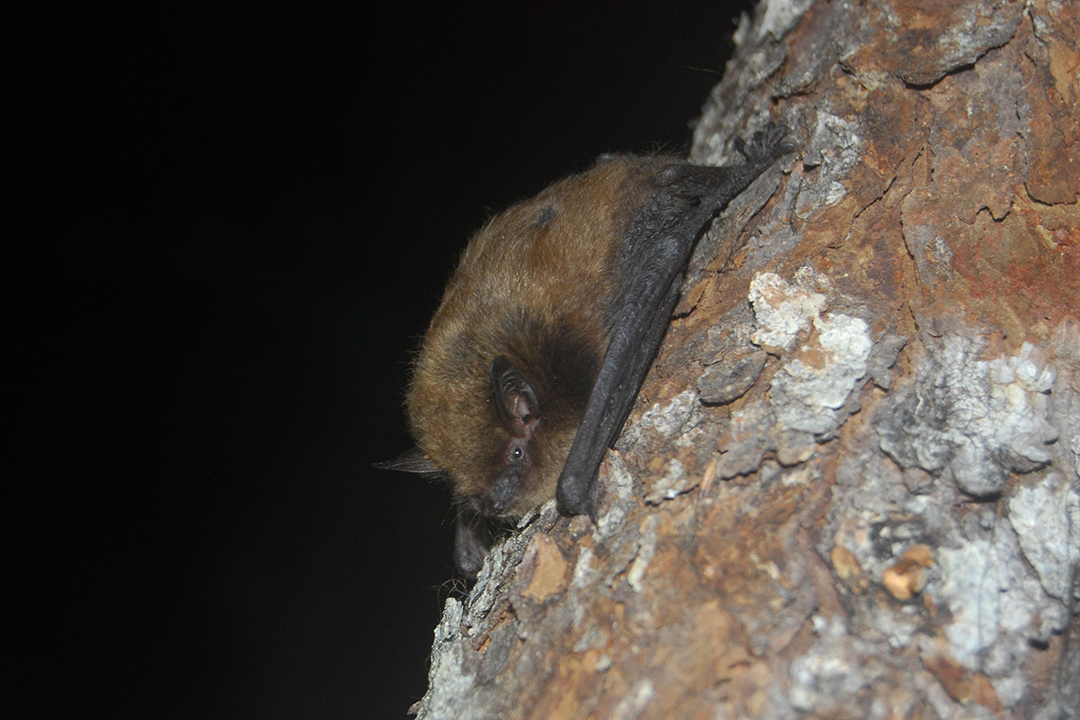
No free rides for bats slows spread of white-nose syndrome
Whether you’re a tourist who is planning a cross-country camping trip or a trucker hauling freight from Toronto to Vancouver, you can help slow the spread of a devastating wildlife disease called white-nose syndrome (WNS) by checking to ensure that you’re not giving a bat a free ride.
“Taking a few moments to be sure you’re not accidentally letting stowaway bats hitch a ride is an easy thing that anyone can do,” said Jordi Segers, national white-nose syndrome program co-ordinator for the Canadian Wildlife Health Cooperative (CWHC), Canada’s wildlife health monitoring organization.
“Checking under awnings, umbrellas, and in RVs, trailers and transport containers before departing to make sure no bats are roosting there can minimize the risks of carrying stowaway bats over large distances.”
WNS has killed millions of bats in eastern North America since it was discovered in 2006. First detected in New York State, the fungus that causes the disease is slowly moving westward as non-infected bats are exposed to infected ones. While the disease affects little brown bats and other hibernating bat species, it isn’t a threat to people or pets.
Bats carrying the fungus causing WNS into new, uninfected locations can accelerate the demise of Canada’s bats. What wildlife health experts are concerned about is human-caused movement of bats: people can unknowingly transport the nocturnal mammals thousands of kilometres in trucks, trains and recreational vehicles.
In addition to the potential spread of WNS, bats that are moved out of their natural range may not survive because of injury, dehydration and starvation. Another danger is that they may not find safe roost sites or places to hibernate.
“It’s important that the public and commercial operations, such as trucking and rail companies, are aware of risks around hitch hiking bats so they can take preventive measures to avoid moving any bats,” said Segers. “Doing so will help on two fronts: by limiting the spread of this disease and by avoiding unnecessary suffering and even death for bats.”
Bats like to roost in small, dark cavities, which is why they’re attracted to transport trailers and shipping containers as potential roosting spaces. Segers said truckers and rail personnel should inspect the inside of transport trailers and shipping containers before leaving the loading dock or port.
Bats also tend to be found in closed umbrellas or awnings. Before leaving their campsites, Segers said campers should check the outside of their recreational vehicles and underneath umbrellas, awnings and tents for roosting bats.
If a bat is found at your destination, contact the local provincial or territorial wildlife agency, the municipal animal control office, a local veterinarian or a wildlife rehabilitator. People also need to take precautionary measures when handling bats: always wear thick gloves when touching bats, disinfect the gloves and wash hands after handling a bat.
A fact sheet with more detailed information on how to minimize the risk of stowaway bats is available on the CWHC site.
Segers is hopeful that researchers will eventually catch up with strategies for preventing and even treating the disease. “Bats provide great ecological services, including eating large numbers of mosquitoes and agricultural pests. Every night they are out helping us. Now is our chance to help bats in return.”
